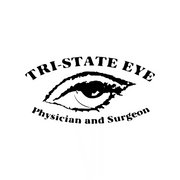
A cataract is a clouding of the eye's lens, which can lead to blurred vision and, if left untreated, loss of sight. There are many different types, some more common than others. Here is what you need to know about the three most prevalent kinds of cataracts.
A Brief Guide to Cataract Types
1. Nuclear Sclerotic
Nuclear sclerotic is the type eye doctors see most; in fact, most people will develop one in their later years. They form in the center—the nucleus—of the lens, hardening, yellowing, and spreading gradually outward to the lens's other layers. They progress very slowly and often take years before they start to trigger noticeable symptoms. These symptoms include blurriness, dulled colors, and seeing halos around bright objects in dark environments.
2. Cortical

Cortical cataracts develop on the outer edge of the lens, an area known as the cortex. They form slowly in the shape of spokes or wedges pointing toward the center of the eye. This causes light to scatter when it enters the eye, resulting in bright glare and altered depth perception. Like the nuclear sclerotic variety, this type is more frequently seen in seniors, though diabetics also have an increased risk of cortical cataracts.
3. Posterior Subcapsular
As its name implies, this type grows on the back surface of the lens. This puts it right in the path of light as it passes through the lens, often resulting in difficulties reading printed text and seeing clearly in low-light conditions. Unlike other types, this condition comes on faster and usually presents symptoms within a few months. People diagnosed with pronounced nearsightedness, diabetes, and retinitis pigmentosa (a rare disease that affects the light-sensitive tissue at the back of the eye) tend to develop this issue more often than others.
If you've been recently diagnosed with any of these conditions, prompt treatment is crucial to restoring your sight and preventing further vision loss. Tri-State Eye has been serving the Middletown, NY, and Milford, PA, areas since 1993. They offer a variety of eyecare services, including cataract surgery and glaucoma treatment. Their team consists of eye doctors, surgeons, and retinal specialists, all dedicated to the health of your eyes. Call (845) 703-2020 to make an appointment or visit their website to explore their services.
About the Business
Have a question? Ask the experts!
Send your question

